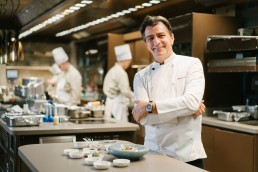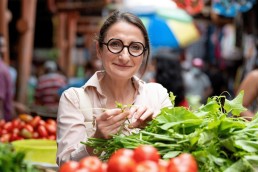Bringing the flavours of his hometown to Four Seasons Hotel Madrid, Michelin star chef Dani Garcia reflects on staying true to his roots whilst conquering the world with his cuisine.
Once a quiet fishing village, Dani Garcia’s hometown of Marbella, in the province of Malaga, is today a world-famous capital of bling. It is home to Spain’s highest concentration of five-star Grand Luxury hotels, which sit among golf courses, multimillion-Euro private homes and exclusive nightclubs, while the world’s largest private yachts dock in the Puerto Banús marina, where celebrities swan around between designer boutiques and flashy cocktail bars.
The irony of Marbella’s glittery reputation is that this coastal part of southern Spain is in fact reputed for its down-to-earth familiarity, approachable humour and strong, homely traditions. “Marbella has never lost its essence,” says Garcia, who grew up accustomed to the bright lights of the port, but also carrying the warm, earthy heritage of the region in his blood. “It’s always maintained its feeling of a small town.”
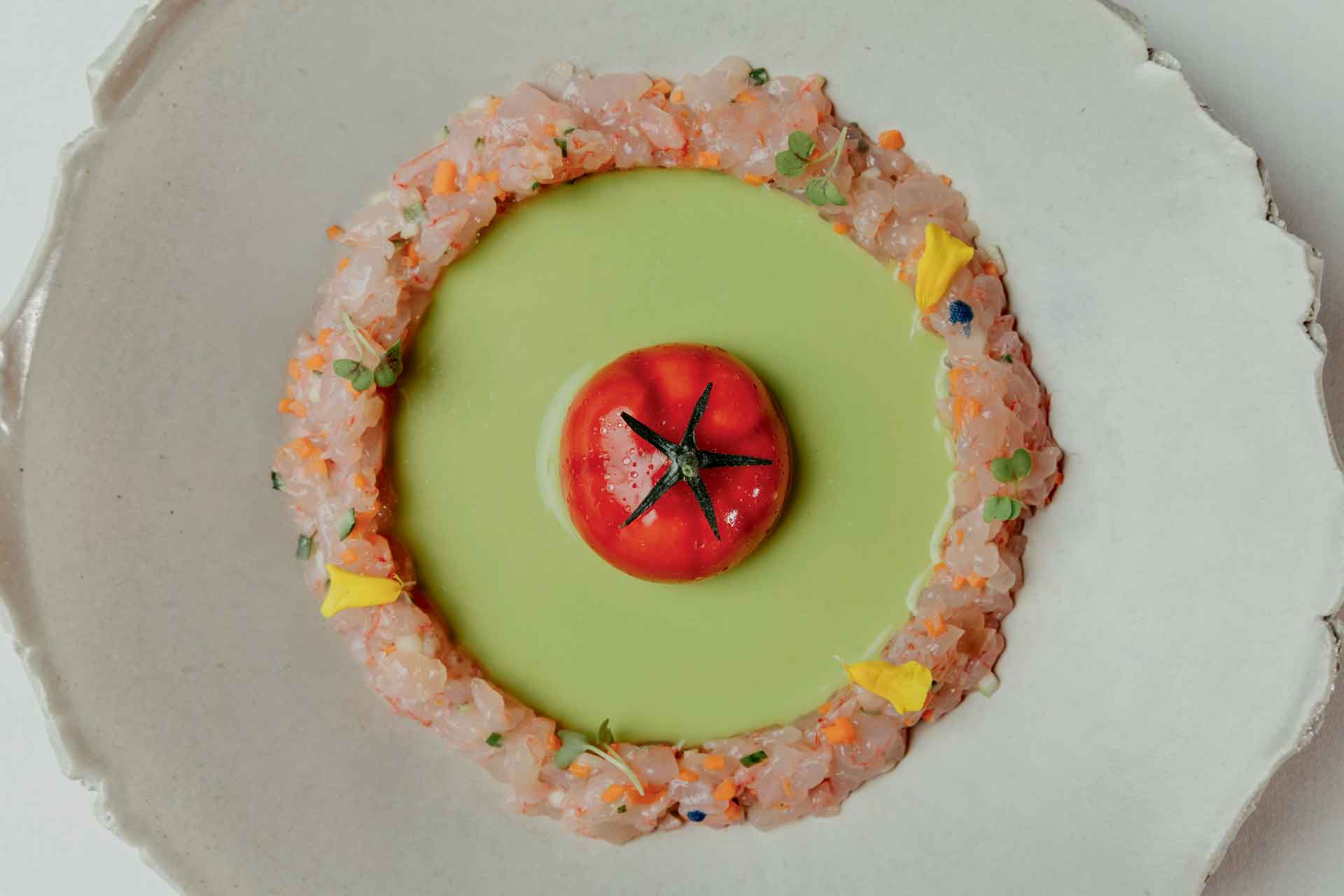
The chef, now 44, has long been a star of Marbella’s luxury dining milieu, with a solid name as one of the region’s most prominent Michelin-starred restaurateurs. Now at the helm of the main restaurant at Madrid’s new Four Seasons Hotel, he is serving a lesson in remaining true to your roots and instincts whilst conquering the globe.
Although gastronomy was never his family’s business, the dining table always formed the central pillar of home life while growing up. “My father was mathematical about it,” the chef recalls. “Many Sundays we’d go out to the mill for oil, or to buy honey and salted anchovies. We’d get asparagus and pine nuts from the fields, olives that we’d season ourselves, snails to cook up at home.”
His mother and grandmother would handle the meals from Monday to Friday, Garcia tells, dishing up what he describes as the “day-to-day” stuff: lentils, cuttlefish with potatoes, gazpacho and ajoblanco (a chilled soup made from almonds and garlic). “My father would cook on the weekends, usually the big dishes that require more work and time,” he continues. Among these, the likes of migas (fried breadcrumbs tossed with sausage meats), gachas (a type of porridge, often seasoned with cinnamon and aniseed) and paella.
Such were the dishes that filled the landscape of Garcia’s childhood, many continue to carry vivid memories to this day, like cazuela de fideos, a quintessential fisherman’s dish from southern Spain. “That clay casserole full of noodles in that yellow, saffrony broth,” he reminisces hungrily; “with clams and chunks of stewed potato.”
Garcia honours these memories of home with restaurants like Lobito de Mar, inspired by traditional chiringuitos, and BiBo, a smart brasserie and now the longest-standing brand in the portfolio. Both of these – sophisticated and luxurious at the same time as personal and thoughtful – started life in Marbella but have been operating outposts in the Spanish capital for some years now.
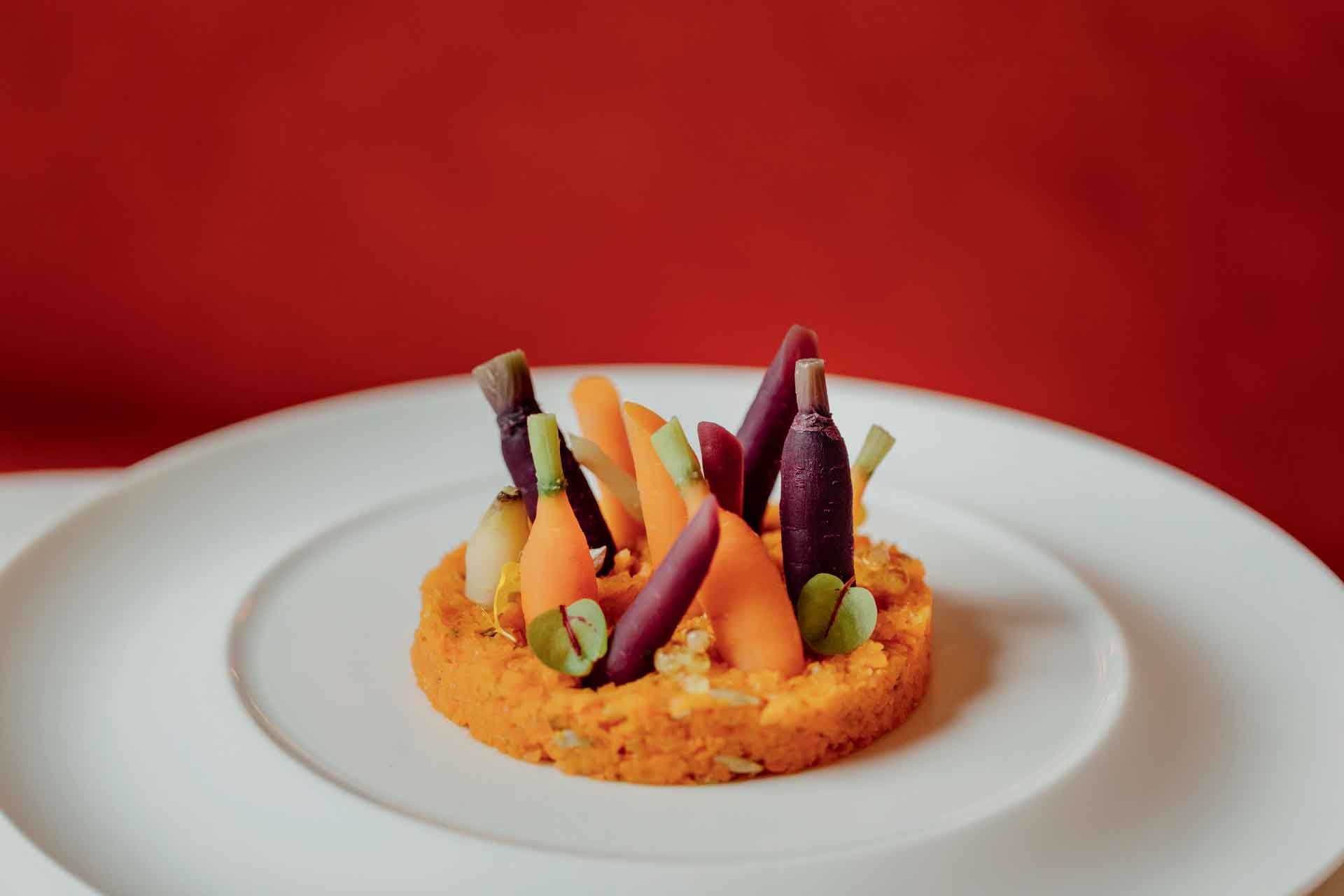
Settling in for lunch at BiBo Madrid, I am served appetisers like foie gras mille-feuille, cherry gazpacho with crumbly goat’s cheese and salty anchovies, and stewed oxtail sandwiched between delicate brioche. A special section of the menu pays tribute to the world-famous almadraba tuna (named after an ancient Phoenecian fishing technique) from the town of Barbate. Tucking into the otoros, loins and tenderloins feels nicely complemented by the life-size tuna sculpture sitting inside a glass tank in the centre of the dining room, the handiwork of Barcelona-based interior designer Lázaro Rosa-Violán. The lighting scheme, inspired by Malaga’s annual folkloric feria celebrations, goes perfectly with the sol de Marbella dessert, a gold leaf-covered chocolate bomb with a filling of orange, orange blossom and Marcona almonds.
It was two years ago that Garcia’s renowned eponymous dining house, located in Marbella’s Puente Romano beach resort racked up its third Michelin star – the only Spanish or Portuguese restaurant to do so that year. Achieving the highest accolade in gastronomy is a historic moment for any chef; but what came after that was a close contender for Garcia’s history books. Just 22 days after his triumph at the Michelin award ceremony in Lisbon, he announced the closure of his winning, world-famous flagship.
It came as just as much of a surprise for his team as for the food-loving public, but Garcia had been planning it for some time. The move stemmed from his disillusionment with the exclusivity of high cuisine experiences: “I didn’t want to go with just two stars,” he admits. “But I had started getting tired of that excessively elitist world.” The huge void between the middle- and high-ends of gastronomy urged him towards a new chapter; now, rather than hunting for more Michelin stars, this Marbellín maestro is on a mission to democratise haute cuisine. “I want to invert the pyramid,” he says. “I feel an obligation to create a revolution in mid-range dining using all our conceptual and technical knowledge.”
What opened in Puente Romano this June, in place of the closed restaurant, was Leña (meaning ‘firewood’ in Spanish), a smart steakhouse with a homely touch. Its diverse selection of meaty delicacies ranges from sobrasada and shawarma to charcoal-grilled Ibérico pork, smoked brisket and chargrilled veal sweetbreads.
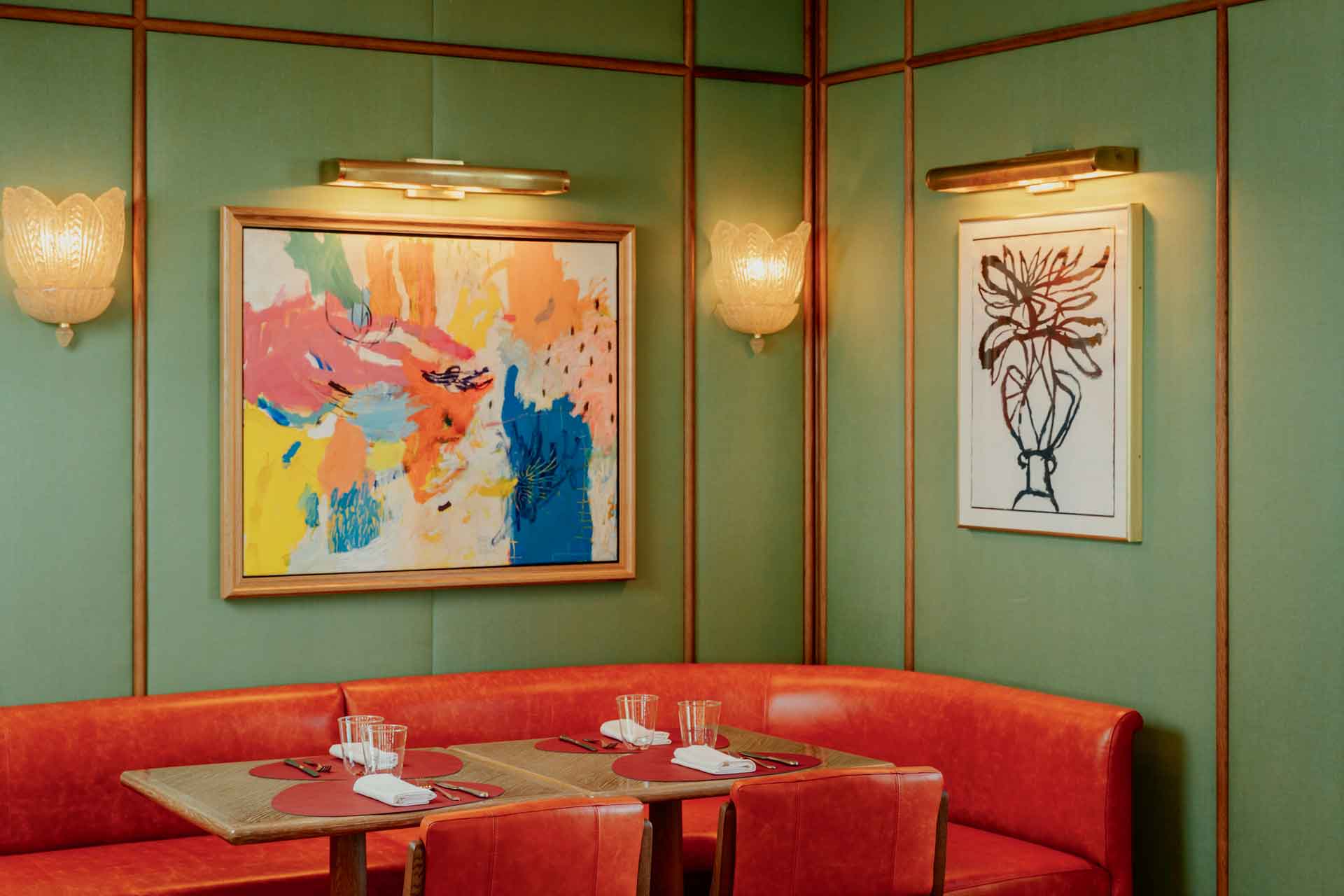
Leña arrived during a summer like no other. As soon as Spain began to emerge from its strict lockdown, restrictions on socialising, hospitality and travel eased with the hope of boosting economic recovery. Despite attempts to cash in on summer tourism and leisure, the outlook is gloomy. This July, Spain had 75% fewer tourists than last year, which is estimated to have cost the economy over 9.4 billion Euros. The hospitality sector is now battling the impact of lost business, as well as of reduced incomes during the furlough period – which Garcia’s company has promised to fully reimburse to its nearly 600 employees.
Ambitious new plans during the pandemic are, no doubt, risky – but risk rather whets Garcia’s appetite. This spirit roots back, in part, to his stint living in New York in 2013. Garcia admires the confident, go-getting attitude of American business culture, compared to a commercial timidness and its paralysing effect on business that he often finds in Spain. “It really stuck with me,” he says, looking back on his New York experience. “Our company has a very American vision in that sense. We’re not afraid of failure.”
So despite the precarious post-Covid terrain, plans for world domination continue. Just this summer, the company hosted a beach house pop-up in Saudi Arabia. Permanent outposts of two of the group’s existing brands are planned to open in Miami soon. They have also launched two new brands for the US hospitality and lifestyle giant SBE: Minuk, a fast-food concept based on Mediterranean salads and roast chicken, and Casa Dani, a more typically Spanish restaurant, now open in New York and with potential plans for London and Paris.
The most highly anticipated current project, however, is closer to home. With an already firm footing in Madrid, Garcia is certainly no newcomer to the Spanish capital – but his restaurant at the new Four Seasons Hotel is set to place him a cut above the rest. The hotel – now more than seven years in the making, and after a few pandemic-related delays – opens its doors this autumn.
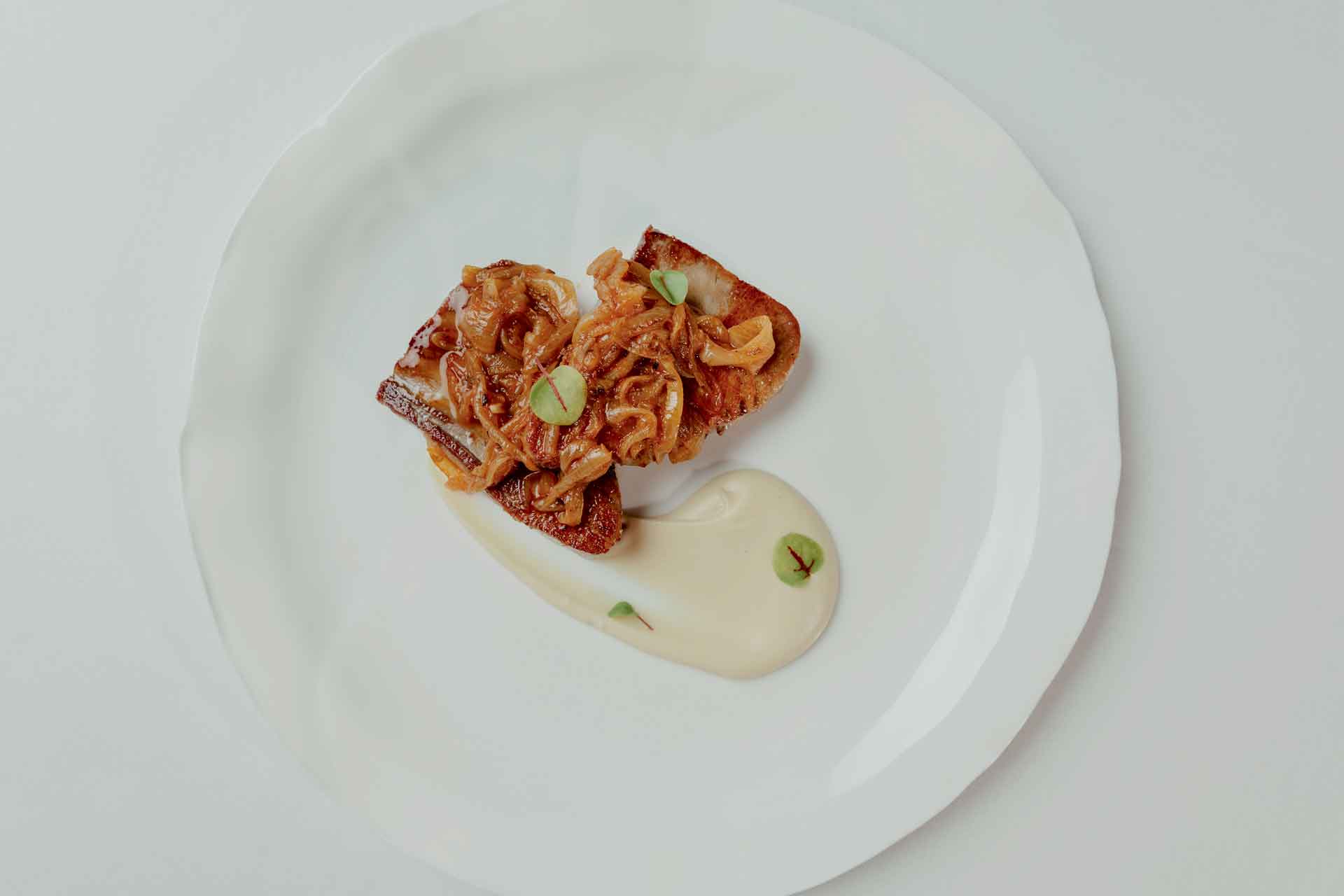
It is part of a €500m luxury development in the city centre, also including a shopping mall and 22 private residences, that has long been set to transform what was Madrid’s already flourishing position as a leading luxury destination. The pandemic may have altered the outlook but Garcia still believes the opening will give the city a much-needed boost. “The arrival of Four Seasons Hotel Madrid is much more than just a new hotel,” he says. “It’s a turning point in the city’s skyline.”
The Four Seasons is not alone in Madrid’s shift towards the high end of tourism; Riu, Pestana and Palladium have also opened major new hotels in the city within the past two years, and the renovated Mandarin Oriental Ritz is slated to open this year too. It might seem an odd fit with Garcia’s other ambitions to focus on the mid-range, but the new brasserie aims to sit somewhere in between the chef’s illustrious Michelin starred name and his desire to expand in the area of more informal dining. “Within our group, it will be the closest thing to the high end,” he explains.
Simply called Dani, the restaurant is located on the hotel’s 7th floor, which was added on top of the existing building as part of Spanish firm Estudio Lamela’s massive architectural task. Martin Brudnizki, based between London and New York, has designed the restaurant’s interiors, where upholstered green walls contrast with rusty orange leather seating, and an open kitchen is set up within a glittering triangular central bar. The vistas from the al fresco area stretch from the Retiro park to the Almudena cathedral, with bastions of Spanish business-like Telefonica and BBVA within waving distance.
The menu mixes the flavours of Garcia’s homeland with the flare of his global vision. It will feature famous dishes from his three Michelin-starred former restaurant, like green gazpacho with tomate nitro (tomato prepared in liquid nitrogen) and anchovies with truffle, alongside the signature convivial style of Andalusian raciones (sharing plates) reminiscent of his other well-loved brands. The fuss-free name exemplifies the chef’s straightforward and personable character: even while floating high over Madrid’s skyline atop one of its most expensive new properties, this south-coast boy’s cosy familiarity is hard to miss.
CREDITS
Words: Agnish Ray
Food Photography: © Oscar Romero
Magazine: Supper 21
Related Posts
18 April 2023
A New Level: An interview with Yannick Alléno
17 November 2022
